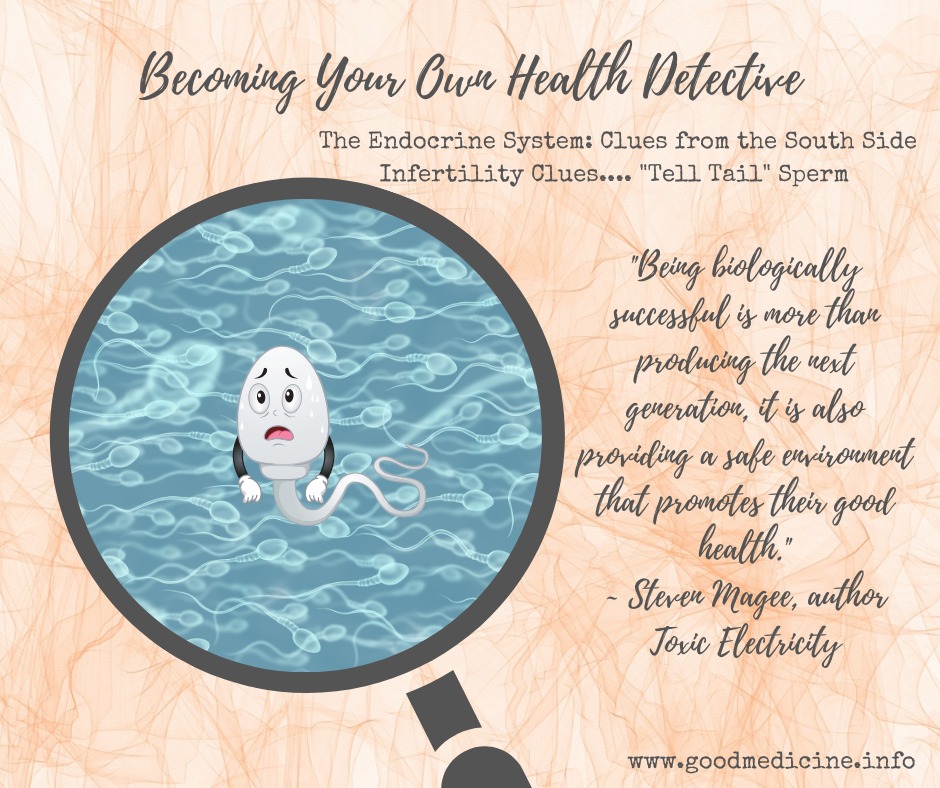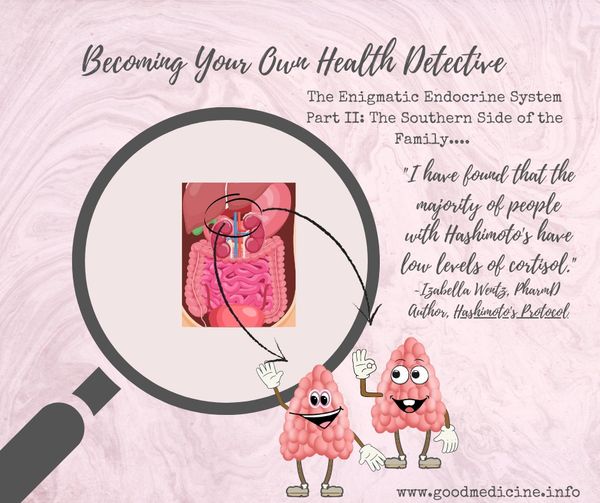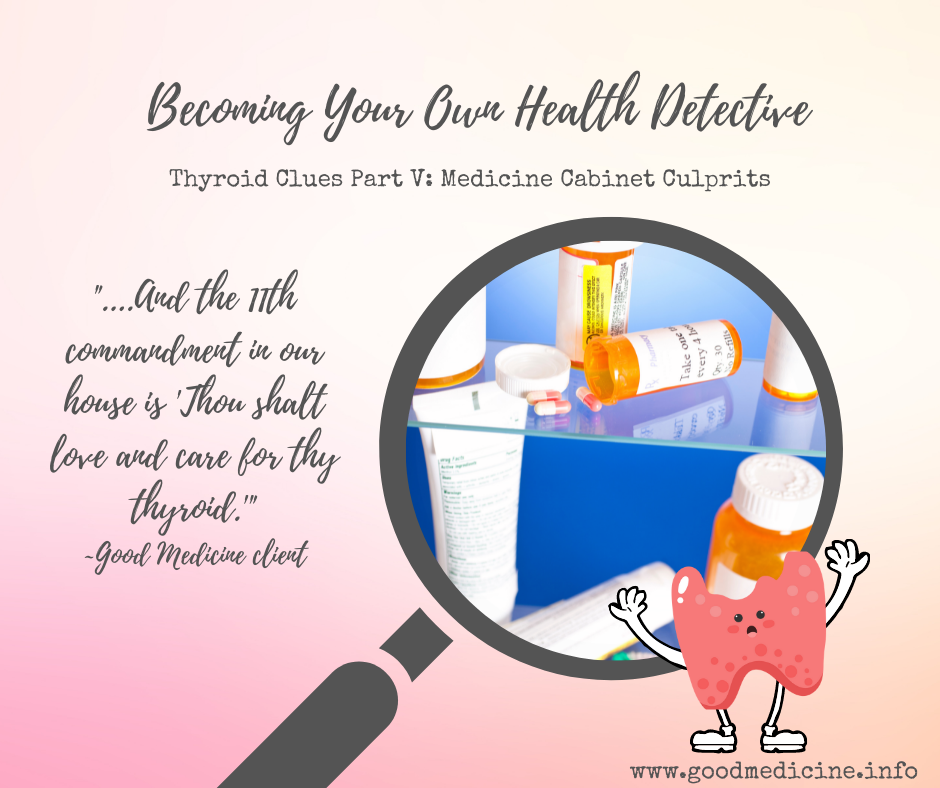The Southern Side of the Endocrine System: “Tell Tail” Sperm
I spent twelve years of my pharmacist career behind the scenes within the infertility industry. Looking back, I realize now that that timeframe (2000-2012) was the “canary in the coalmine” years for our country’s fertility decline. The infertility industry accelerated at rocket speed
behind the scenes within the infertility industry. Looking back, I realize now that that timeframe (2000-2012) was the “canary in the coalmine” years for our country’s fertility decline. The infertility industry accelerated at rocket speed to keep up with the need. Interestingly, the trajectory of infertility and autoimmune disorders share a remarkably similar path and timeline.
to keep up with the need. Interestingly, the trajectory of infertility and autoimmune disorders share a remarkably similar path and timeline.
As I was accumulating research for this particular topic, I couldn’t help but dig deeply into current information and statistics. When I left the industry in 2012, 10% of women (ages 18 to 44) struggled with fertility and a growing number of men were also being diagnosed with fertility disorders. Sadly, these numbers have only continued to escalate.
Male factor infertility (MFI) currently accounts for 50+% of infertility issues for a couple. Biomechanically, studies have analyzed and found that the most common causes include:
-
An absence or low levels of sperm (and estimated 10-15% lack sperm entirely)
-
Abnormal shape of sperm
-
Abnormal movement of sperm (these swimmers should be swimming fast in one direction!)
-
Abnormal release of sperm
While this is important information, it does not expose the root of the problem….. Why are sperm count and “swimability” continuing to decline? After all, men are still men all these thousands of years later, determined by the presence of their XY chromosome.
For all of eternity there has been the occasional physical trauma or genetic anomaly affecting the family jewels (or to the pituitary or hypothalamus which participate in the sperm production process). This trauma or anomaly may have long term implications on sperm production, and while damage may be a plausible reason for infertility, this factor has not changed over the years, and therefore has a very small role in the more than 50-60% decline in sperm production since 1973.
Infertility (both male and female) is a massive clue pointing directly towards the presence of toxins in a personal environment. Recall that the endocrine system is an incredibly precise chemical cascade. When that cascade is interrupted by a daily barrage of toxins, the “machinery” ceases to function as it should. Imagine water in a gasoline tank. If that happens, a vehicle simply ceases to work. Water seems innocent enough, until it has polluted that which makes the vehicle go.
What are some of the “water in the gas tank” possibilities when it comes negatively affecting sperm production? Glad you asked! Seemingly innocent lifestyle choices and habits are often overlooked and are generally the predominant culprits.
-
Processed Foods – Studies have connected eating processed foods (especially those with fats found in margarines and hydrogenated cooking oils) with decreased sperm count and altered sperm motility.
-
Alcohol – Heavy drinking is connected with reduced sperm quality and decreased testosterone production.
-
Caffeine – Excessive amounts of caffeine may lower sperm count.
-
Smoking- Tobacco negatively affects sperm count and quality.
-
Marijuana and THC
-
Exposure to mainstream household/ work chemicals or solvents. While some of these product ingredients are outright carcinogenic poison to the body, others are a slow daily drip of kryptonite to our mighty men. This slow drip of “kryptonite” ( aka: BPA and phthalates found in plastic water bottles, bodycare products and epoxy resins, dioxins, herbicides, organophosphate pesticides, flame retardants, lead, arsenic, mercury, and glycol ethers found in household and industrial cleaners, adhesives, and degreasers) erodes masculinity at its very core by raising estrogen levels and simultaneously lowering testosterone levels. Estrogen dominance does not discriminate. Men are prone to this hormonal imbalance too. ED is easily identifiable with lab work (testing testosterone and estrogen levels both), the visual presence of “man boobs”, and the specter of infertility or erectile dysfunction.
-
Cell phone in the front pocket of pants – Semen quality and quantity has been found to be adversely affected when a cell phone in “talk mode” is carried in the pocket of pants.
-
Choice of underwear – Tight fitting underwear (or pants) increases testicular temperature which reduces both sperm count and motility.
-
Chronic stress – The body does not lie, and it will work to protect itself (and its potential offspring) when in chronic fight/flight/ or freeze mode.
Many common medications are often thefts of male fertility too:
-
SSRI’s – used for mood disorders. An estimated 11% of infertility is caused by this class of medication. These medications affect DNA sperm quality and erectile function. Common culprits include sertraline, fluoxetine, citalopram, lexapro, and paroxetine.
-
Testosterone replacement therapy (especially when used incorrectly) drastically reduces the level of testosterone in testicles, which in turn lowers sperm production.
-
Antihistamines (eg: loratadine and cetirizine) and antacids (eg: ranitidine and cimetidine) appear to have long term negative effects on male fertility
-
Calcium Channel Blockers – This is a class of medications commonly used in the management of high blood pressure, angina, migraines, heart disease, and some heart arrhythmias. (eg: amlodipine, nifedipine, verapamil, diltiazem)
-
Tamsulosin – (used to treat benign prostatic hyperplasia)
-
Cipro and Levaquin – (antibiotics)
-
Some vaccinations, especially when combined with an existing toxin load in the body, are being studied as possible contributors to infertility
Unlike eggs, sperm are constantly created when conditions are healthy. An entirely new sperm health profile is possible within 2-3 months of consistent positive changes being made:
-
The Scottish kilted men knew what they were doing
, but if wearing a kilt doesn’t appeal to you, consider boxers instead of briefs.
-
Get an EMF blocker for cell phones, AND remove an active phone from the front pocket of pants.
-
Watch for endocrine disruptors in your daily life. Reading labels is HARD, even for me. There are hundreds of common chemicals in household and daily use personal care products that fall under the “Endocrine Disruptor” category, and we can’t possibly memorize them all. Keep it simple and worry free by purchasing from Young Living. No label reading required because everything is safe, toxin free and fertility friendly. Clean inside and out with Thieves Household Cleaner and Thieves Kitchen and Bath Scrub. Cologne is another common endocrine disruptor source. Thankfully, Young Living’s essential oil blend Shutran is healthy, hormone supportive, and smells incredible! The Shutran Men’s Care line has body wash, aftershave lotion, bar soap, beard oil and shaving cream. These, in addition to the YL shampoos and conditioners, ensure you’ve cleaned up well, with no endocrine disrupting along the way.
-
Support healthy male hormones and a more balanced stress response with Young Living’s PowerGize capsules, or consider applying YL’s Idaho Blue Spruce essential oil to inner and outer ankles morning and night.
-
Work towards correcting lifestyle habits and choices which may be diluting sperm production. Eat, sleep, and manage stress as though a generation is depending on you, because they are! This includes protecting boundaries in all areas of life.
-
In most instances, pharmaceutical use can also be minimized or avoided entirely with lifestyle changes and the help of your favorite holistically focused healthcare professional. Get to know your Young Living supplements and oils. They are extraordinarily valuable tools that can help you in ways you might not yet imagine. Do some digging and/or ask a savvy friend!
Health is the most valuable possession any of us have, and it’s the one thing we do have full control over unless we abdicate that right by giving it over to someone else to manage. Nobody will care for or know you better than you.
Swim upstream. Future generations will thank you for providing them with a strong foundation of health!
xoxo~ liz






